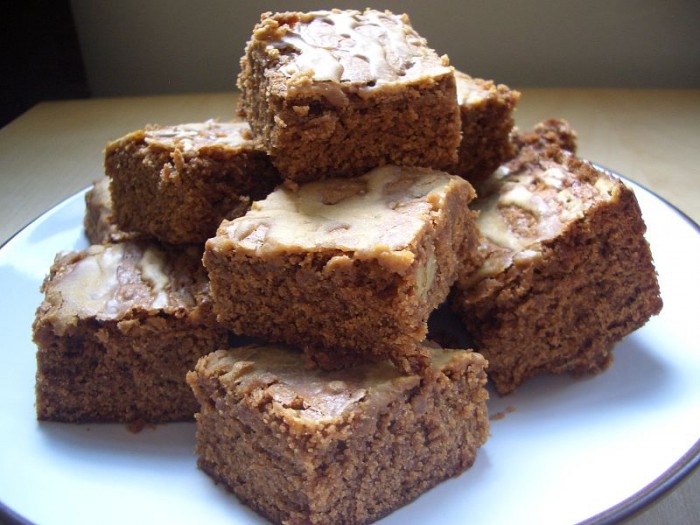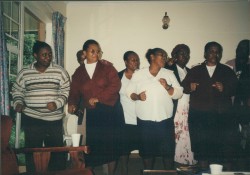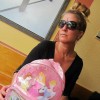
Back when I had “Save-the-World Syndrome” (circa 2001-ish), a British development agency brave enough to hire me
With a 42.6 percent HIV prevalence rate (in simple English, that means almost one in two people were living—more so dying—due to HIV-related illnesses), high incidences of TB and Malaria—with a side of Cholera and Diabetes (Thanks, Col. Sanders!). It was a destination where no South African dare visit, much less work or live (by choice). It is known as the mountain-nest village of Hlabisa, my home for two years.
Aside from two dog-nappings (for the record, the Zulu Mafia helped me get the dogs back! Siyabonga!), death threats, Sangoma-delivered pythons, hospital administration corruption, the car-jackings (they even car-jacked an ambulance!), the random but consistent local violence and crime (especially on “Pay Day” and nights of a Full Moon), the international and domestic press buzzing around Hlabisa like flies on caca; and of course, the daily threats of exposure to HIV, malaria, tuberculosis, muti (Zulu “Black Magic”) and cholera, Marcos and I created a “cozy” home for ourselves (as well as two “rescue” dogs, Boo! and Paco), and maintained a highly creative, relatively comfortable life amid what might resemble Hell to the average person.
 As Development Director of a small, local nonprofit community-based organization (
As Development Director of a small, local nonprofit community-based organization (started by a few concerned foreign doctors and locals), I quickly learned that one cannot simply “address” basic primary healthcare (much less a whole HIV/TB/Malaria epidemic!) and rural development issues anywhere without addressing local, regional and national economics, politics, education, history, public infrastructure, water and sanitation, agriculture, gender issues, religion, and well, Mother Nature.
We had no access to AIDS treatment options back in the early 2000s, so the only health care options for people living with HIV/AIDS at the time (throughout most of the world, I might add) were a mixture of limited “band-aid” drugs and some antibiotics, holistic therapies by local traditional healers, the prayers of a shaman/church and family, decent nutrition, and improved living conditions—if we were lucky.
So, basically, I was trying to respond to a local epidemic (which was part of a larger pandemic), with limited access to medications as well as human resources (you know, like doctors and nurses!), limited choices in food (they don’t have Trader Joe’s out in the bush!), poor water and sanitation systems, poor living conditions in general and high levels of stress and unemployment.
 Several villages I visited were populated solely with grandmothers and (orphaned) children—the adults were dead, in the process of dying or fled the villages for jobs in the city. Therefore, my primary health care team of community-based caregivers consisted of 28 Zulu grandmothers and four grandfathers.
Several villages I visited were populated solely with grandmothers and (orphaned) children—the adults were dead, in the process of dying or fled the villages for jobs in the city. Therefore, my primary health care team of community-based caregivers consisted of 28 Zulu grandmothers and four grandfathers.
Out of desperation, I started researching holistic and alternative therapies and treatments, everything from Ayurveda to yoga. I actively participated in this research, explaining to my Zulu neighbors that I was “praying in motion” when they discovered me practicing yoga in their cornfield. I asked my staff of grandmothers to create a master list of all the indigenous fruits, veggies, medicinal plants and herbs in the entire region. This Master Food/Plat List quickly became our “health-bible.”
For example, the indigenous tea rooibos (known sometimes as “Red Bush” tea in the States) contains powerful anti-cancer antioxidants, is high in minerals and good for circulation, helps absorb iron, relieves an upset stomach, and repairs several skin infections. Who knew?! Scientists now confirm that drinking rooibos tea regularly can protect against a process known as “lipid peridoxation,” which is directly linked to Alzheimer’s and Parkinson’s Disease.
“What is a dagga?” I asked one of my Zulu Grandmothers and pointed at her list of local plants. She said something I could not understand (in Zulu) then started giggling and comically mimicked smoking a joint.
“Marijuana?” I blinked.
“Bob Marley,” she nodded.
“Wait a minute! There is marijuana around here?! WTF?! Why didn’t someone point this out earlier?!” I started immediately researching all the scientifically documented healing properties of cannabis, which much to my surprise included PTSD treatment (very useful in these parts!), relief from depression and several other mental illnesses, nerve pain (neuropathy being a common symptom of HIV), nausea and lack of appetite, cancer treatments and therapy for Multiple Sclerosis (which my mother happens to have).
(Sound of angels singing) I found the answer to everything! Douglas Adams just forgot to add a “0”!
“Oh no, Miss Kelly.This will not work.” One of my Grandmothers shook her head.
“What do you mean?! Marijuana is practically the cure for everything out here! And it would be free!”
“No. Only the “lazy boys” (slang for security guards) and criminals smoke marijuana. No decent person would risk being seen smoking marijuana, much less buying or growing it. No.” She crossed her arms, looked me straight in the eye again, “No.”
I tried for days to convince the Grandmothers (and four grandfathers) that “pot” was the answer to most of our immediate healthcare problems, but they would not budge. Some were concerned about “being high” and smoking in general, but most of all, they feared what the neighbors would think. My response to that, “The neighbors are bloody dying, they are not worried about someone smoking a doobie, I promise you!” I argued that nutritious marijuana-medicine-infused meals, “edibles,” could be easily prepared as an alternative to smoking. “No, this will not work.”
“If I could only get them to try it, I know it will work,” I confided in Marcos.
“And how do you expect to pull that off?!”
“Well..(lots of thinking), I am going to hold a staff appreciation dinner!”
Marcos’ response to my controversial plan, “And you wonder why these people would want to kill you?!”
 Yes, indeed, my friends, I invited my entire Grandmother (and four Grandfathers) League of community-based caregivers over to my house for a special dinner to show my appreciation for all their hard work. I prepared a traditional Zulu meal (with chaka laka!) alongside some of their favorite American dishes, such as, macaroni-and-cheese and mashed potatoes, with chocolate brownies for dessert. By the end of the meal, only
Yes, indeed, my friends, I invited my entire Grandmother (and four Grandfathers) League of community-based caregivers over to my house for a special dinner to show my appreciation for all their hard work. I prepared a traditional Zulu meal (with chaka laka!) alongside some of their favorite American dishes, such as, macaroni-and-cheese and mashed potatoes, with chocolate brownies for dessert. By the end of the meal, only three brownies remained on the plate.
I succeeded in keeping everyone’s attention for almost an hour after dinner, individually thanking each person on my staff—when the giggles started. I don’t recall which grandmother actually started the giggles, but like a bush fire it spread through the group rapidly, which turned into snorts and finally into a full-out sing-a-long.
Taking advantage of the hightened atmosphere of camaraderie, I asked everyone, “How are you feeling?” Meanwhile, one grandfather and one grandmother danced together in my living room. When the overwhelming response was happiness, I confessed I spiked the brownies with marijuana.
Dead Silence…for a really long time!
Then a sudden outburst of giggles!
That is when I knew I had won! Yes, a few weeks later, I held a proper cooking class in my kitchen, preparing marijuana in vegetable oil (a common ingredient in Zulu cooking) for five of my Zulu Grandmothers. These five Zulu Grandmothers would later teach the other Grandmothers (and the four Grandfathers) and so on, until eventually our whole home-based care giving staff (as well as the people they treated), learned and benefited from the healing properties of marijuana.
Love elephant and want to go steady?
Sign up for our (curated) daily and weekly newsletters!
Editorial Assistant: Travis May / Editor: Catherine Monkman
Photos: Brownies, Kelly N Patterson










Read 0 comments and reply